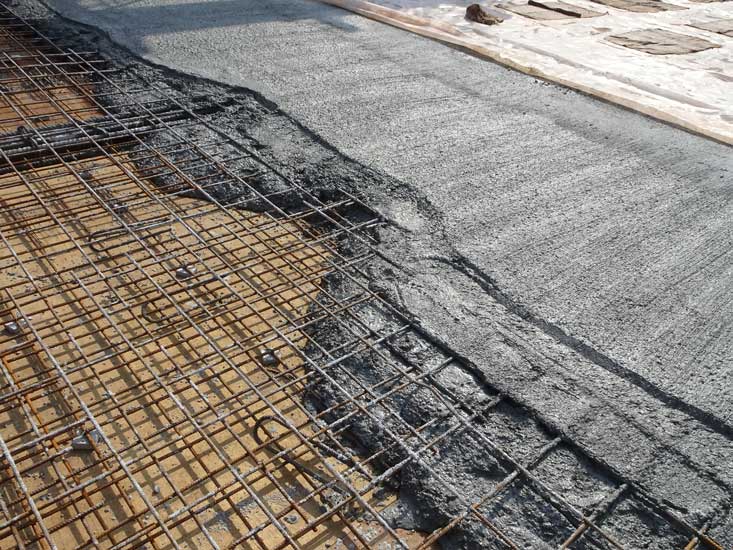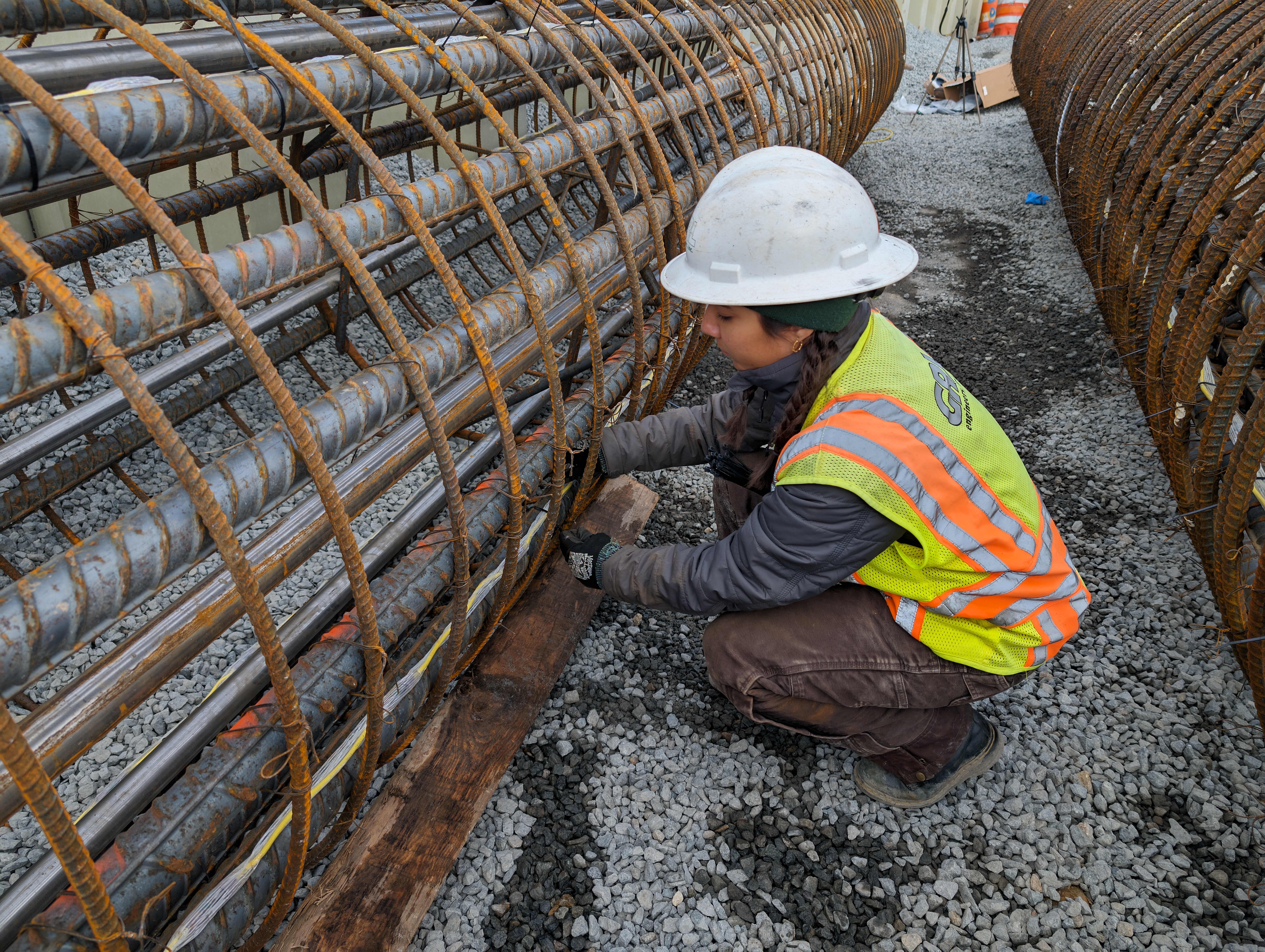The Necessary Function of Concrete Structure in Structural Integrity and Long Life
When it concerns building a building, the foundation is much more important than you might assume. Concrete structures supply unrivaled stamina and durability, ensuring your structure can stand up to numerous ecological obstacles. Without a strong base, you risk potential problems like changing or fracturing, which can jeopardize safety and worth. Comprehending the subtleties of concrete foundations can be the trick to protecting your financial investment for many years ahead. What should you take into consideration next?
Recognizing the Importance of Concrete Foundations
Concrete foundations are important to the total stability of any type of framework, as they give the important support needed to withstand various lots and environmental problems. When you think regarding building a home or a business area, the foundation is the initial thing you must think about. It works as an obstacle versus wetness, protecting your residential property from water damages. A well-placed concrete structure additionally prevents settling and shifting, which can bring about splits in wall surfaces and floorings. You'll wish to ensure that the foundation is correctly developed and enhanced, as this impacts the longevity of your structure. In addition, a solid structure can enhance energy performance by reducing air leakages. Keep in mind, ignoring the relevance of a concrete foundation can cause costly repair services down the line. So, investing in a top quality structure upfront is important for the honesty and resilience of your framework.
Benefits of Concrete Structures for Architectural Stability
While several factors contribute to a structure's structural integrity, concrete structures use unrivaled sturdiness and toughness. You'll value that concrete can withstand extreme climate condition, withstanding both moisture and temperature variations. This resilience means your framework is much less most likely to experience breaking or shifting with time, which can endanger its safety.Additionally, concrete's inherent weight provides a solid base, protecting against motion throughout natural events like earthquakes or floodings. When you pick a concrete structure, you're likewise choosing for reduced maintenance; unlike wood, it won't rot or attract insects, saving you time and money in repairs.Moreover, concrete's fire resistance supplies added security, guaranteeing your framework can endure heats without substantial damages. Overall, buying a concrete structure suggests you're focusing on the long-term security and stability of your structure, making it a smart option for any kind of construction job.
Usual Types of Concrete Foundations
When it involves constructing foundations, comprehending the common kinds of concrete foundations can aid you make educated choices for your project. One of the most common kinds include slab-on-grade, crawl space, and full cellar foundations.A slab-on-grade structure is a basic, economical choice, where a thick concrete slab is poured directly on the ground. This type functions well in cozy environments, as it lessens heat loss.Crawl area foundations boost the home a little above ground, enabling air flow and accessibility to pipes and electric systems. This design can aid protect against dampness issues.Full cellar structures offer added living or storage area while supplying excellent architectural support. They call for even more excavation and are generally made use of in chillier climates to stop frost heave.
Variables to Think About When Creating a Concrete Structure

Best Practices for Setting Up Concrete Foundations
When you're installing a concrete structure, appropriate website preparation is important to guarantee security (West Coast GE Concrete contractors). You'll likewise need to comprehend support strategies to enhance strength and sturdiness. Do not overlook the treating process, as it plays an essential role in achieving a strong structure.
Website Preparation Importance
Although it might seem uncomplicated, proper site preparation is essential for guaranteeing a strong and sturdy concrete foundation. Beginning by clearing the location of any type of debris, greenery, or organic product that can jeopardize the foundation's stability. Next, analyze the dirt kind and compaction; you may require to excavate or include products to produce a secure base. Level the ground to assure also weight circulation and avoid settling problems later on. Mounting appropriate drainage systems is likewise important to avoid water build-up, which can damage the foundation in time. Mark out the foundation's measurements accurately to guide the putting procedure. By complying with these steps, you'll set the stage for a successful concrete foundation that stands the examination of time.
Reinforcement Strategies Explained
When the website is properly prepared, the following action in guaranteeing a strong concrete structure includes applying reliable reinforcement methods. You must begin by making use of steel rebar, which supplies tensile toughness and aids stop splitting. Lay the rebar in a grid pattern, ensuring it's raised making use of spacers to keep correct protection. Additionally, take into consideration making use of wire mesh for added assistance, specifically in locations subject to hefty loads. Don't forget to connect the rebar crossways securely with cord. For bigger foundations, fiber support can improve durability, minimizing the risk of shrinking cracks. Always comply with local building ordinance and guidelines to make certain compliance. By using these support techniques, you'll considerably improve your foundation's stamina and durability, laying a solid foundation for your framework.
Healing Process Basics
To ensure your concrete structure remedies properly, it is necessary to preserve adequate wetness and temperature level conditions quickly after putting. Begin by covering the surface with a wet cloth or plastic sheeting to preserve moisture. This keeps the concrete hydrated, preventing splits and making certain stamina. You ought to additionally check the temperature; ideal treating problems are in between 50 ° F and 90 ° F. If it's as well warm, mist the scc concrete surface regularly to stop quick dissipation. For cool climate, take into consideration utilizing insulating coverings to maintain heat. Aim for a healing period of at the very least 7 days, as this is crucial for optimal stamina development. By adhering to these best techniques, you'll enhance your structure's resilience and long life, making sure structural stability for years to find.
Upkeep of Concrete Foundations for Long Life
To keep your concrete foundation solid and lasting, routine inspections are necessary. You should likewise assure effective drain remedies are in location to avoid water damage. If you find any kind of cracks, addressing them immediately will conserve you from bigger problems down the line.

Normal Inspections and Analyses
While normal evaluations and evaluations might look like a chore, they're essential for maintaining the stability of your concrete structure. By routinely inspecting for cracks, changes, or indications of wear, you can catch possible issues before they intensify right into pricey repair services. Search for any water merging around the structure or unusual settling, as these can signal underlying troubles. It's likewise smart to check any adjustments in your home's framework, like doors that stick or windows that do not open efficiently. Keeping a document of your evaluations aids track modifications with time, enabling for aggressive maintenance. Inevitably, these assessments assure your structure continues to be secure, sustaining the long life and safety and security of your entire structure. Do not overlook this essential aspect of homeownership!
Efficient Water Drainage Solutions
Routine examinations can reveal problems like water drainage problems that may endanger your concrete foundation's stability. To stop water accumulation, ensure your gutters and downspouts straight water far from the structure. Installing French drains can efficiently reroute surface area and groundwater, reducing pressure on your foundation wall surfaces. In addition, rating the soil around your home helps ensure that water moves away, instead of merging near your foundation.Consider using sump pumps in areas susceptible to flooding, as they actively eliminate excess water. Regularly look for blockages in drainage systems and clear them immediately. You'll secure your structure's honesty and long life by taking these aggressive measures. Remember, effective drainage services are vital for maintaining a strong, sturdy concrete foundation.
Trigger Crack Repairs
When you observe splits in your concrete foundation, addressing them promptly is necessary for preserving its durability. Little cracks can swiftly develop right into larger problems, compromising the architectural honesty of your home. Frequently check your structure for indications of damages, such as straight or upright fractures. If you detect any kind of, don't wait-- fix them right away. You can use epoxy injections or concrete patching substances, which are efficient for sealing fractures. Always adhere to the maker's directions and think about speaking with a professional for substantial damages. Remember, prompt repair services not only boost your structure's sturdiness but additionally save you cash in the lengthy run by avoiding more comprehensive repairs down the line. Keep positive, and your structure will continue to be strong and secure.
Attending To Common Problems With Concrete Foundations
Concrete structures can face numerous problems with time, making it vital to identify and address them without delay. One of one of the most common issues is cracking, which can happen as a result of temperature level variations or clearing up dirt. If you discover splits, it's important to analyze their size and depth; tiny cracks can commonly be secured, while larger ones might call for professional evaluation.Water invasion is an additional significant issue. Excess wetness can bring about mold growth and architectural damage. Guarantee correct drainage around your foundation to alleviate this threat. In addition, look for indications of moving or bowing wall surfaces, as this can show underlying concerns with your foundation's stability.Regular evaluations are basic to capture these problems early. If you spot any concerning indications, do not think twice to consult a foundation expert. By staying proactive, you can maintain the stability and longevity of your concrete foundation, assuring your home continues to be secure and safe and secure.
Regularly Asked Inquiries
Just How Does Dirt Kind Influence Concrete Structure Performance?
Dirt type considerably impacts concrete foundation performance. If you've got large clay, as an example, it can create changing and splitting. Sandy dirt could bring about resolving. Recognizing your dirt assists guarantee a stable structure.
Can Concrete Foundations Be Fixed if Damaged?
Yes, you can repair broken concrete structures. Depending upon the degree of the damage, strategies like epoxy shot or piece jacking can recover security. It's finest see it here to speak with a professional for effective remedies.
What Is the Normal Life-span of a Concrete Structure?
A concrete foundation generally lasts 30 to 100 years, depending on variables like soil conditions, environment, and maintenance. You'll desire to watch on it to guarantee it continues to be healthy throughout its lifespan.
Exist Alternative Products to Concrete for Foundations?
Yes, there are options to concrete for foundations, like steel, hardwood, or even recycled products. Each choice has unique advantages and drawbacks, so you need to consider your job's certain demands when picking the appropriate product.
Exactly How Does Environment Effect Concrete Foundation Sturdiness?
Environment considerably impacts concrete foundation durability (West Coast General Engineering concrete foundation). Severe temperatures, wetness, and click this link freeze-thaw cycles can weaken the material, causing splits and structural problems. You need to consider regional environment problems when planning your foundation to ensure lasting efficiency